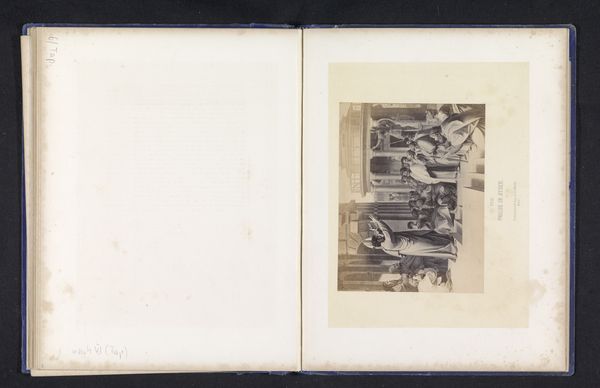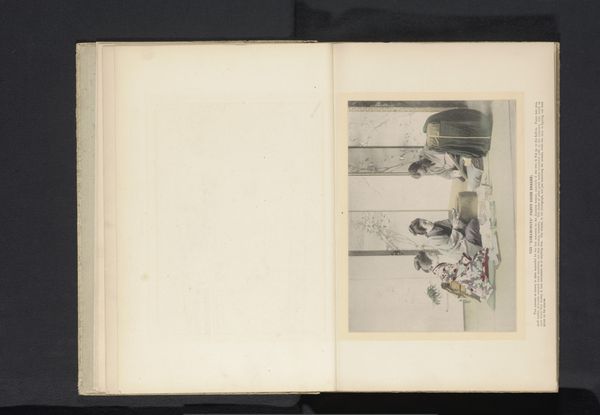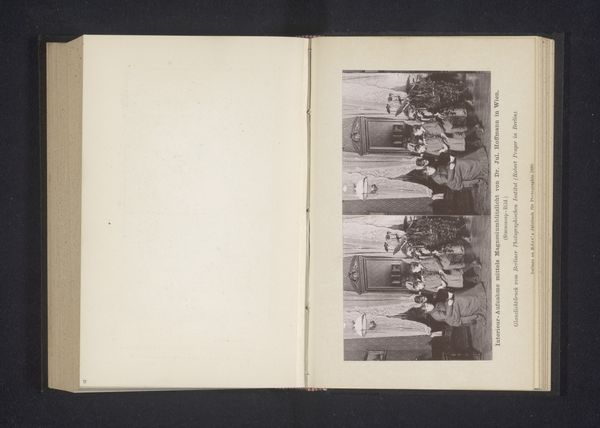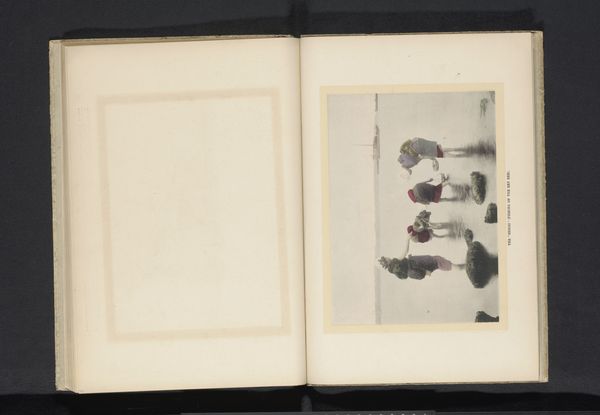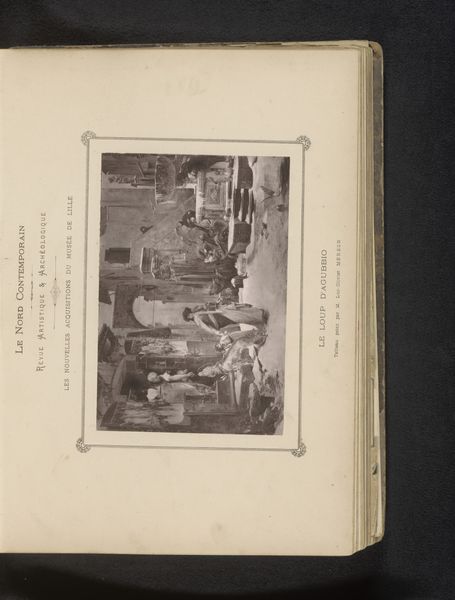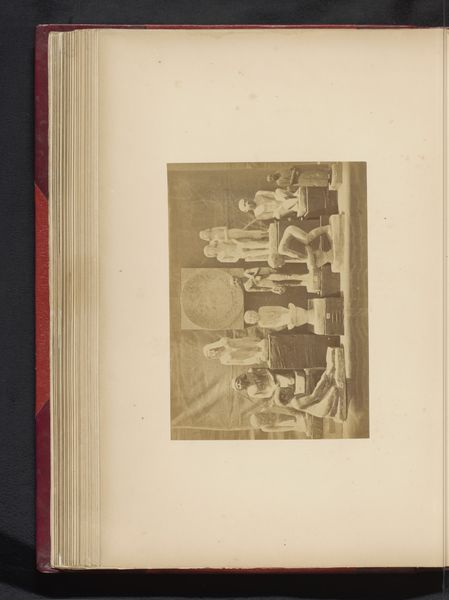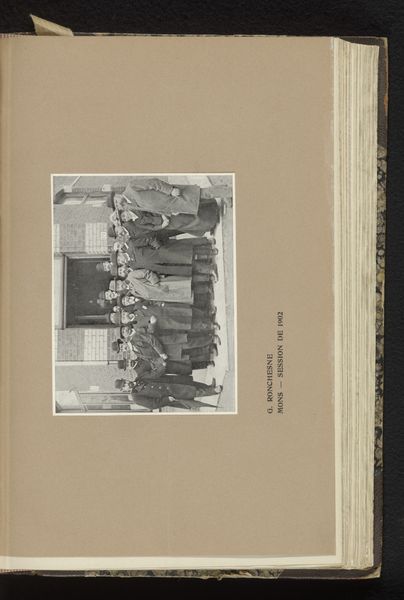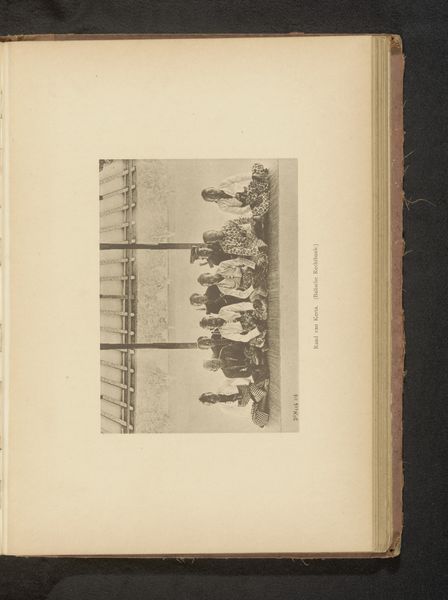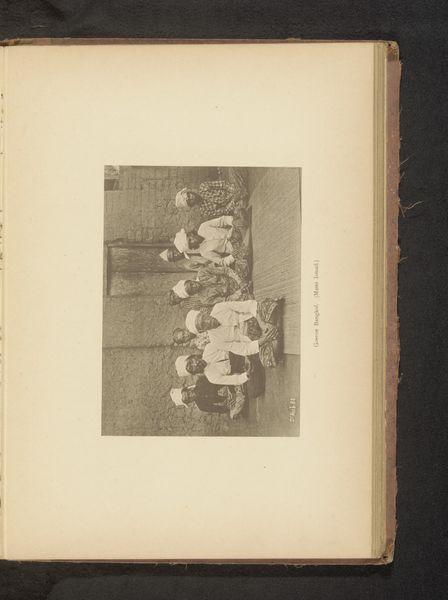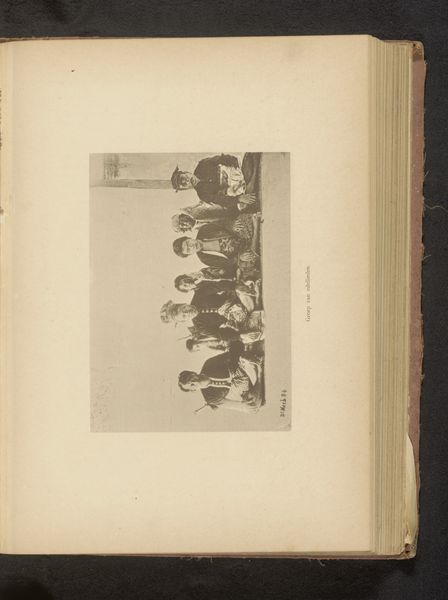
Dimensions: height 168 mm, width 229 mm
Copyright: Rijks Museum: Open Domain
Editor: So, here we have a photograph, almost a mezzotint in its tonality, titled "Zes vrouwen tijdens een Chanoyu of Japanse theeceremonie", which translates to "Six Women During a Chanoyu or Japanese Tea Ceremony," dated before 1900. It’s interesting seeing this cultural snapshot preserved within the leaves of what looks like an old album. It feels quite intimate and posed. What's your take on it? Curator: The enduring allure of the tea ceremony rests within its rich symbolism. Each gesture, from the cleaning of the utensils to the shared sipping of the tea, signifies harmony, respect, purity, and tranquility. Look closely at the arrangement of the women, their placement hinting at a social hierarchy. Editor: Oh, I see! Is it always women performing the ceremony? Curator: Not always, but in this context, before 1900, women were often the purveyors and keepers of this domestic ritual. Their careful movements within this contained space speaks volumes about the roles prescribed to them, yet also their mastery of grace. Do you see other symbolic elements? Editor: Perhaps the single window and sparse décor speak to purity, paring things down to only what is necessary for connection and mindfulness. Curator: Precisely. Notice how their faces are partially obscured, downplaying individuality. This reminds us the ritual eclipses personal ego; it’s about connection through shared experience, embodying values of collective identity. It is a shared, carefully enacted cultural memory. Editor: That really does put the whole photograph in a new light for me. The ritual transcends the everyday; it’s a portal to something deeper. Curator: Exactly. Visual elements become tools, not just decoration but encoded language to preserve cultural identity. The power of shared meaning woven through an image endures through generations.
Comments
No comments
Be the first to comment and join the conversation on the ultimate creative platform.

